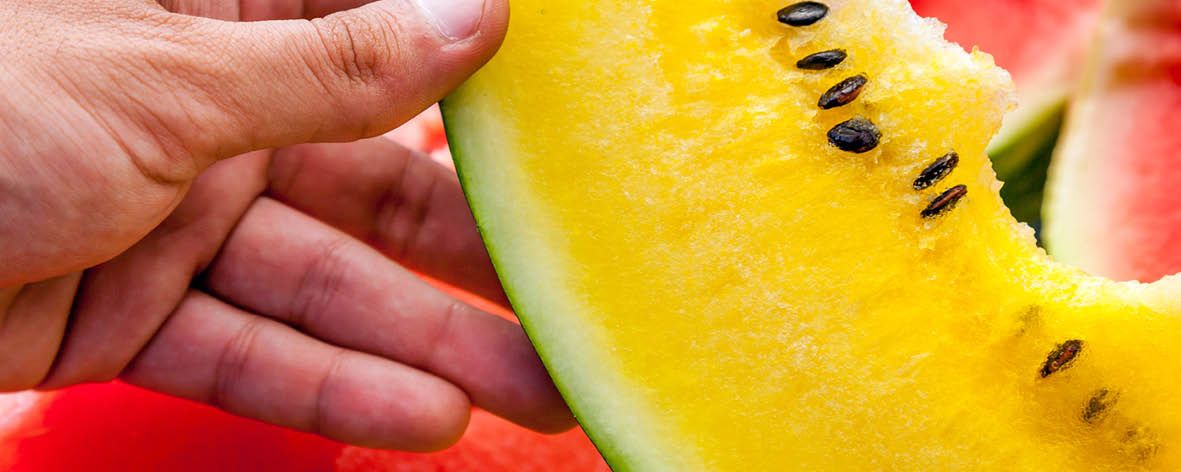All you need to know about … Yellow watermelon

If I said “close your eyes and picture a watermelon”, chances are you would imagine a large melon with green skin and a brightly coloured pinkish-red interior. But did you know that not all watermelons are red? Yellow watermelon is just one of many varieties of watermelon available around the world. So what’s the difference between red and yellow and why should you give yellow watermelon a try?
Red watermelons contain a chemical called lycopene that produces the red colour in fruits and vegetables like tomatoes. The lack of lycopene in yellow watermelon results in their yellow flesh. Yellow watermelons were actually cultivated before red melons. They were first grown in Africa about 5000 years ago and then went through cross-breeding to produce red watermelon.
Yellow watermelons are generally slightly sweeter than red watermelon and have a honey-like flavour. Nutritionally yellow watermelon is a great snack with only 46 calories per cup. It is high in vitamins A and C, making it good for your immune system and skin health. Yellow watermelon contains more of the antioxidant beta-carotene than red watermelon. Beta-carotene is thought to protect against cancer and eye disease.
Use yellow watermelon in fruit salads, on platters and in desserts, smoothies and juices. It’s high water content makes it ideal for keeping you hydrated and it tastes delicious.

